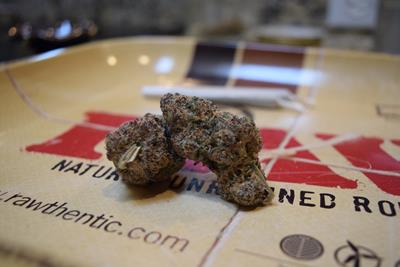
Tuesday August 17, 2021
By Erin Hiatt
 Education
Education
As more states legalize cannabis and create regulatory frameworks, in the absence of federal legalization and oversight, states are on their own when it comes to determining what constitutes a dose of cannabis. In Colorado and many other legal states, one dose of edible cannabis is 10 mg. But in newly legal Connecticut, one dose is half of that, 5mg. So it begs the question, how is one dose of cannabis determined?
How One Dose is Determined for Other Medicine
Let’s look first at how medical dosage is generally determined. If you’re an adult taking something like ibuprofen, especially if purchased over the counter, the dose is standardized based on a weight of approximately 155 lbs. An NSAID (non-steroidal anti-inflammatory drug) such as ibuprofen is typically dosed at 200 mg per pill with a daily limit of 1,200 mg, or 6 pills over a 24-hour period. For children, dosage is determined by weight and typically at the direction of a doctor.
How did researchers arrive at these specific numbers? They were established after many years of investigation and clinical practice.

That is the pathway for most medicines: through experimentation baselines and ceilings are determined for safe dosage. Very often, these factors are calculated based on weight.
Cannabis dosing, however, cannot be based on weight, and has not been put through the same testing rigors because of ongoing federal prohibition, leaving consumers and state regulators in the dark about what a standard dose should be. But there is some precedent.
How Cannabis is Dosed
Most of the research done on cannabis dosing has been focused on isolated THC, found in medicines such as the FDA-approved synthetic THC-derived medicine Dronabinol, marketed as Marinol. When determining doses of Marinol, researchers found that somewhere between 2.5 mg to 10 mg of THC per dose worked best for both children and adults. Whether or not states looked to the Marinol studies to determine state regulations for dosages is nearly impossible to tease out, but given that Marinol is one of the few FDA-approved cannabis medicines out there, it seems like a safe bet.

But there’s a big caveat. Unless you’re buying straight-up THC or CBD isolate, cannabis that you’d purchase from a dispensary is not just one cannabinoid. The plant is multi-faceted with many different cannabinoids and terpenes, all of which work together to create the entourage effect. For example, five milligrams of a sativa with limonene will have very different effects than an indica with pinene. Additionally, a person’s biology will also play a role in a strain’s effects.
Conclusion
In short, cannabis dosing is not a one-size-fits-all scenario like it is with common pharmaceuticals. But instead of state-level substantive conversations about what would be best for cannabis consumers, regulators seem to be kicking the can down the road, zeroing in instead on creating THC potency caps.
It’s true that the average potency of cannabis products is rising. In 2019, the average potency of marijuana seized by the DEA was 14 percent, triple the average in 1995 (the first year that the National Institute on Drug Abuse began collecting data). Momentum among lawmakers is gathering to place potency caps on THC, but so far, cannabis industry insiders have managed to squelch such efforts, arguing that potency caps will push consumers into the illicit market. Vermont is the only exception, with flower capped at 30 percent and concentrates at 60 percent.
As usual, it leaves the onus on the consumer to know what dosage is appropriate for them, usually by undergoing a process of trial and error. So how can you determine your own dose? Well, it’s tricky. You’ll need to start by considering a few things: are you an experienced consumer or new to the plant? Are you hoping to use cannabis as a tool in the treatment of a particular condition? Are you consuming for fun, or to help you get a better night’s sleep? Keeping all of these things in mind, as well as having conversations with your healthcare professional can help you make informed decisions about cannabis dosing that’s right for you.
What does “one dose” of cannabis mean to you?







